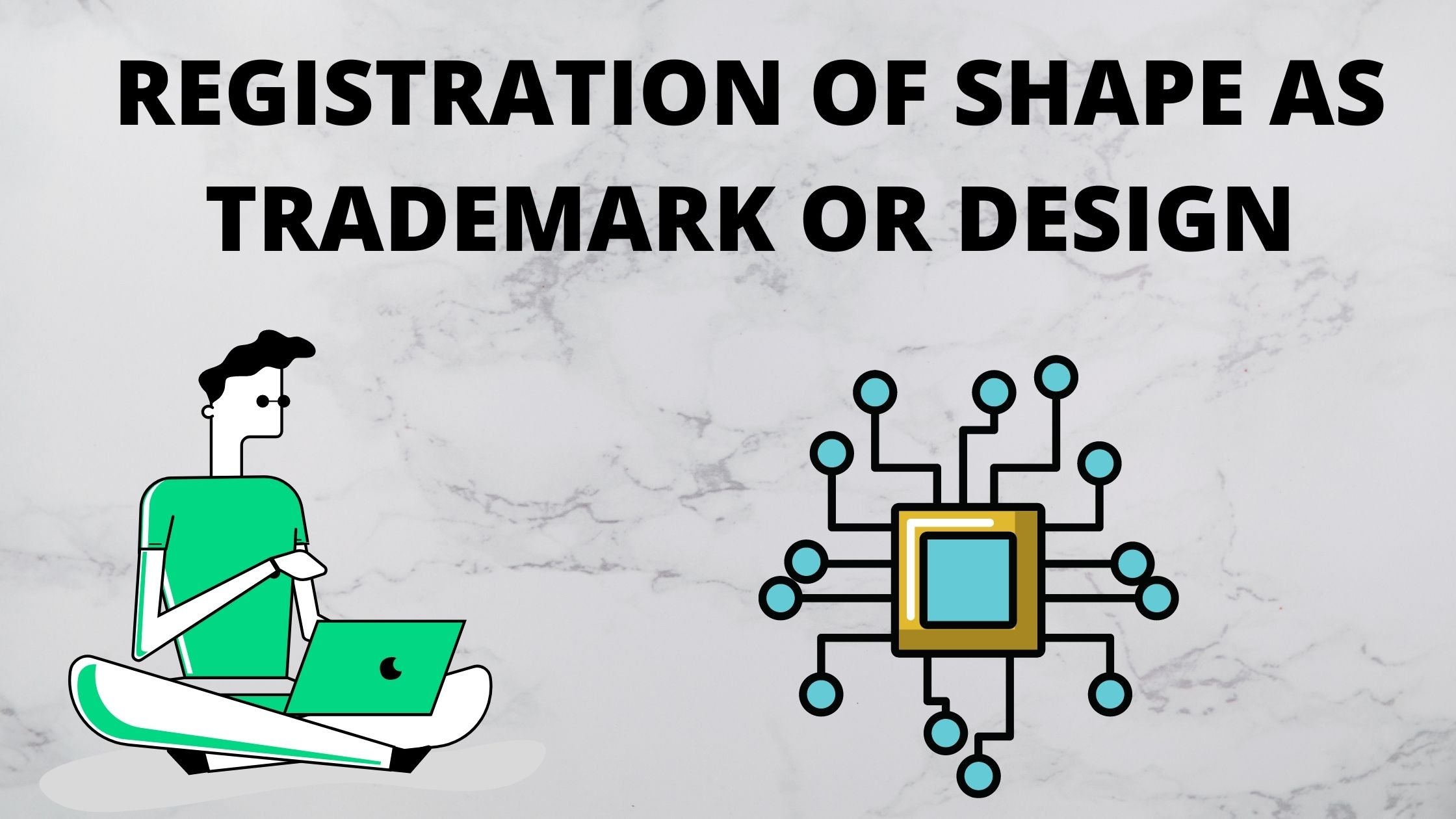REGISTRATION OF SHAPE AS TRADEMARK OR DESIGN
The shape of a product was included in the Trademark statute by a way of the amendment as an unconventional trademark.

A trademark is a symbol, word, phrase, or design that distinguishes from one source to another. Whereas a registered design is the overall appearance of the product. It is about the visuals and the features of the product.
The shape of a product was included in the Trademark statute by a way of the amendment as an unconventional trademark. When it comes to the shape of the product, it can be protected under Trademarks as well as Designs. There are two forms of values for a shape, aesthetic and functional.
|
Aesthetic Value |
Design Registration |
Validity for 10 years |
Renewable for 5 years |
The aesthetic value represents the overall view of the product |
|
Functional Value |
Trademark Registration |
Validity for 10 years |
Renewable for 10 years |
The functional value represents the functions of the shape |
If you want to know about different types of Trademark then watch this video -
BASIC DIFFERENCE BETWEEN A REGISTERED DESIGN AND AN UNCONVENTIONAL TRADEMARK DESIGN:
REGISTERED DESIGN records only the look and the aesthetic value of the product. The functional aspects of any shape will be registered under trademarks. Any design for registration shall include an original design. The originality of the design will depend upon whether the said design or shape has been pre-published or disclosed anywhere. The shape of the product should grow from the mind of the creator and shall be completely new and different. These will contain a shape that will be considered for registration as a design.
SHAPE TRADEMARK should be represented graphically for it to be registered as a trademark. It was introduced as an unconventional trademark with the help of amendments after the trademark discipline started receiving applications for registration of shapes. The prerequisite for a shape to be registered as a trademark is that the graphically presented shape of the trademark shall be of three different views of the shape. In case the registrar is not satisfied with the description, they can call for the applicant to provide five further views of the same.
PROTECTION OF SHAPE UNDER DESIGNS ACT, 2000 AND TRADEMARK ACT, 1999
Under the Designs Act, the two-dimensional and three-dimensional aesthetic features of a product are protected, which are visible to the human eye. Anything merely mechanical comes under the scope of the trademark act.
Under the Trademark Act, the entire concept of a trademark is where there is a mark that is capable of being represented graphically which helps the product from being distinguished from others.
There is general confusion that arises in the minds of the people of the legal field regarding the two-dimensional and three-dimensional shapes. Can a three-dimensional product be trademarked? Though trademarks generally refer to marks such as names and logos, three-dimensional products may be registered only if they help to indicate the source of the product. There is a test that needs to be followed in order to determine whether a product configuration can be registered as a trademark:
Step 1: If the product configuration has some form of utility attached to it?
- If it does, then the configuration could be registerable.
- If it does not, then the configuration could be registerable if it has acquired distinctiveness.
Step 2: If the utility exists- Is the shape essential to the device, or will it affect the quality of the device?
- If it does, then it is not registerable.
- If it does not, then it may be registerable if it has acquired distinctiveness.
Acquired distinctiveness is where the shape or the configuration of any product has gained additional distinctiveness. Also known as a secondary meaning, the implies that the mark is different than the dictionary meaning of it.
REGISTRATION OF SHAPE AS A TRADEMARK: IMPORTANT STEPS TO TAKE NOTE OF
As per the Indian Trade Marks Rules, 2002:
- The mark should consist of the graphic or a photographic representation with at least three different vies of the same.
- If the registrar is not satisfied, they may call upon for five more views of the shape in question.
- If the registrar is still not satisfied, the applicant could be called upon to produce a sample of the trademark.
REGISTRATION OF SHAPE AS A DESIGN: IMPORTANT STEPS TO TAKE NOTE OF
As per the Designs Act, 2000:
- The design should be original and new, and not published in any other country.
- The design may be related to a known shape or pattern to a different subject matter.
- The design should regard the shape, configuration, pattern, or ornamentation characteristics added or applicable to an article.
- The design should be related to an industrial process
- The design should prima facie look like one at the face of it, and not be something embedded inside.
- The design should not include any property mark or artistic work.
Hence, the trademarks and designs have a very clear line of difference when it comes to the concept of including shapes in the work. Where one is just with the help of eyesight, the other should have the functional ability to be understood.
By - Aditi Goel












